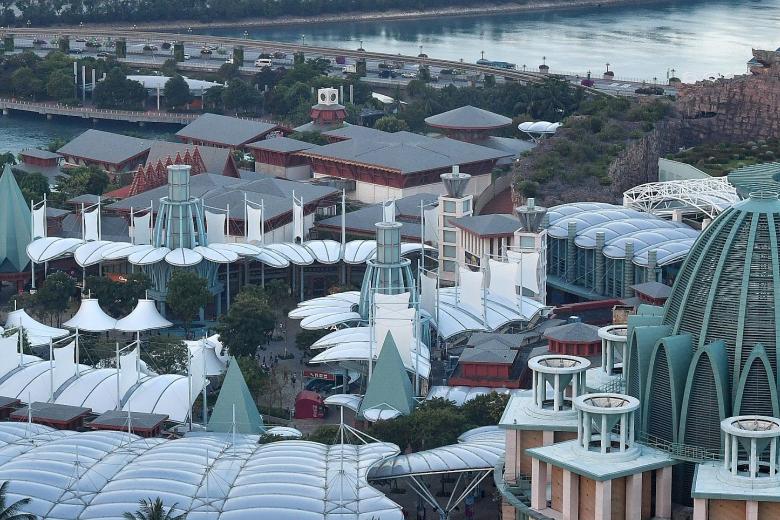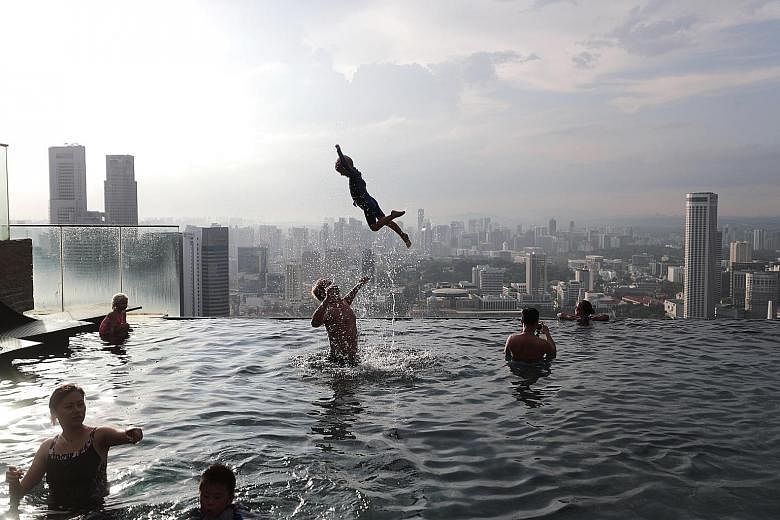Family-friendly attractions, entertainment and event venues, and new luxury hotels form the bulk of the integrated resorts' (IR) plans for expansion in Singapore, their first major transformation since opening nearly a decade ago.
But gaming remains their main driver of revenue, and the allowance for Marina Bay Sands (MBS) and Resorts World Sentosa (RWS) to add an additional 2,000 sq m and 500 sq m of gaming space, respectively, was a necessary incentive to expand their other attractions, economists said.
The deal struck between the Government and operators of the two IRs here - Las Vegas Sands and Genting Singapore - to extend their exclusivity agreements for another decade with a total $9 billion investment was a win for all parties and will provide a lift to the economy, observers said.
According to Genting Singapore's 2018 annual report released on Tuesday, the group's gaming revenue for last year was $1.68 billion, up from $1.59 billion the year before. Its non-gaming revenue, including hotel rooms and attractions, also increased from $777.9 million in 2017 to $834.2 million last year.
According to Las Vegas Sands' 2017 financial report, total casino revenues for Marina Bay Sands went up 16.5 per cent over the year before to $2.52 billion, over four times more than what its mall and hotel pulled in combined. Its full-year report for 2018 has yet to be released.
In announcing the plans on Wednesday, which include tighter safeguards against problem gambling, the authorities said that both IRs will be granted additional gaming provisions to keep their new attractions and facilities "commercially viable".
These include the option for more approved casino space and gaming machines, though they will be targeted at "higher-tier non-mass market players who are mainly tourists".
If the IRs fully exercise their allotted amounts, their total gaming area will increase from 30,000 sq m to 32,500 sq m. Each is currently allowed 15,000 sq m of approved gaming area and 2,500 gaming machines. If they so choose, MBS and RWS may add 1,000 and 800 machines, respectively.
Both MBS and RWS said that they have not determined the details on the use of additional approved gaming space.
Maybank Kim Eng economist Chua Hak Bin said that the opening of the two IRs in 2010 "turned the tide for tourism" in Singapore, and their expansion now may help to arrest the slowdown in tourism spending seen last year.
MBS and RWS are facing increasing competition in the region, with Japan set to legalise casinos and open its own integrated resorts.
It has not been smooth sailing for the Singapore casinos in re-cent years either, due in part to a corruption crackdown in China that has curbed the number of high rollers.
Ms Shirley Tee, senior course manager of Nanyang Polytechnic's diploma in hospitality and tourism management, said that Singapore's casinos, which target high rollers, can also tap developing markets such as Vietnam.
Dr Chua said the idea behind integrated resorts was to have gaming corporations finance non-gaming attractions such as amusement parks, which can be risky standalone investments. As such, more provisions for the core gaming business are "the carrot to entice them to put in more family attractions", he said, especially given the Government's introduction of higher casino tax rates and entry levies on locals.
The IRs are expected to directly create an additional 5,000 jobs in total through their expansion, though these are likely to be mainly in the service sector and difficult to fill given the manpower crunch and impending tightening of foreign worker quotas, economists said.
Singapore University of Social Sciences economist Walter Theseira said that the new jobs are unlikely to translate to net job growth as Singapore's labour market is already operating at close to capacity.
Still, DBS senior economist Irvin Seah noted that indirect job creation will also be stimulated in areas such as renovation and subcontracting.
People's Action Party MP Liang Eng Hwa, who is chairman of the Government Parliamentary Committee for Finance and Trade and Industry, said that the investment is a "very significant injection into the economy", which will have both direct and indirect benefits.
The commitment by the two IR operators to significant new investments is a boon for Singapore as their non-gaming offerings are already a major draw for both tourists and locals, he added.



